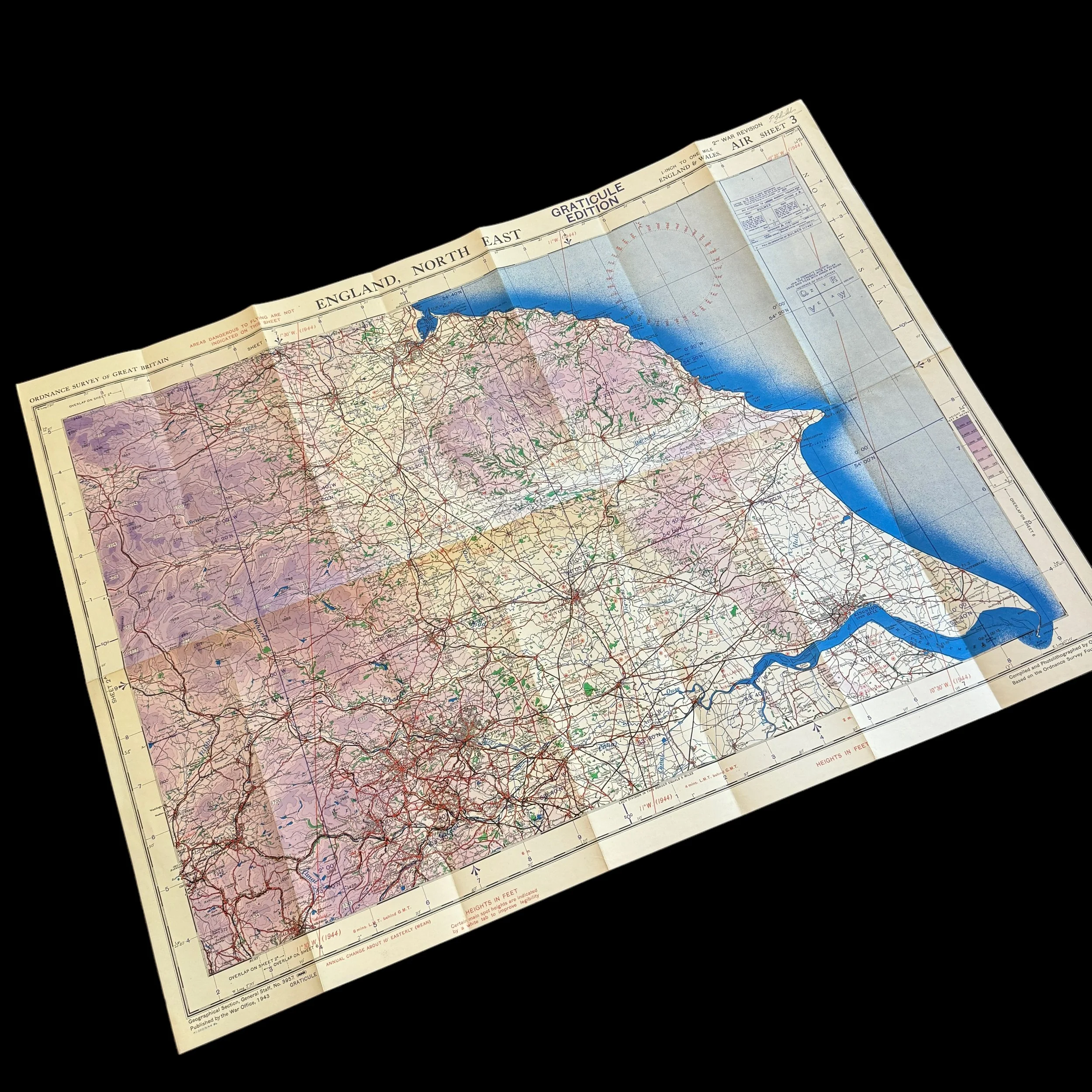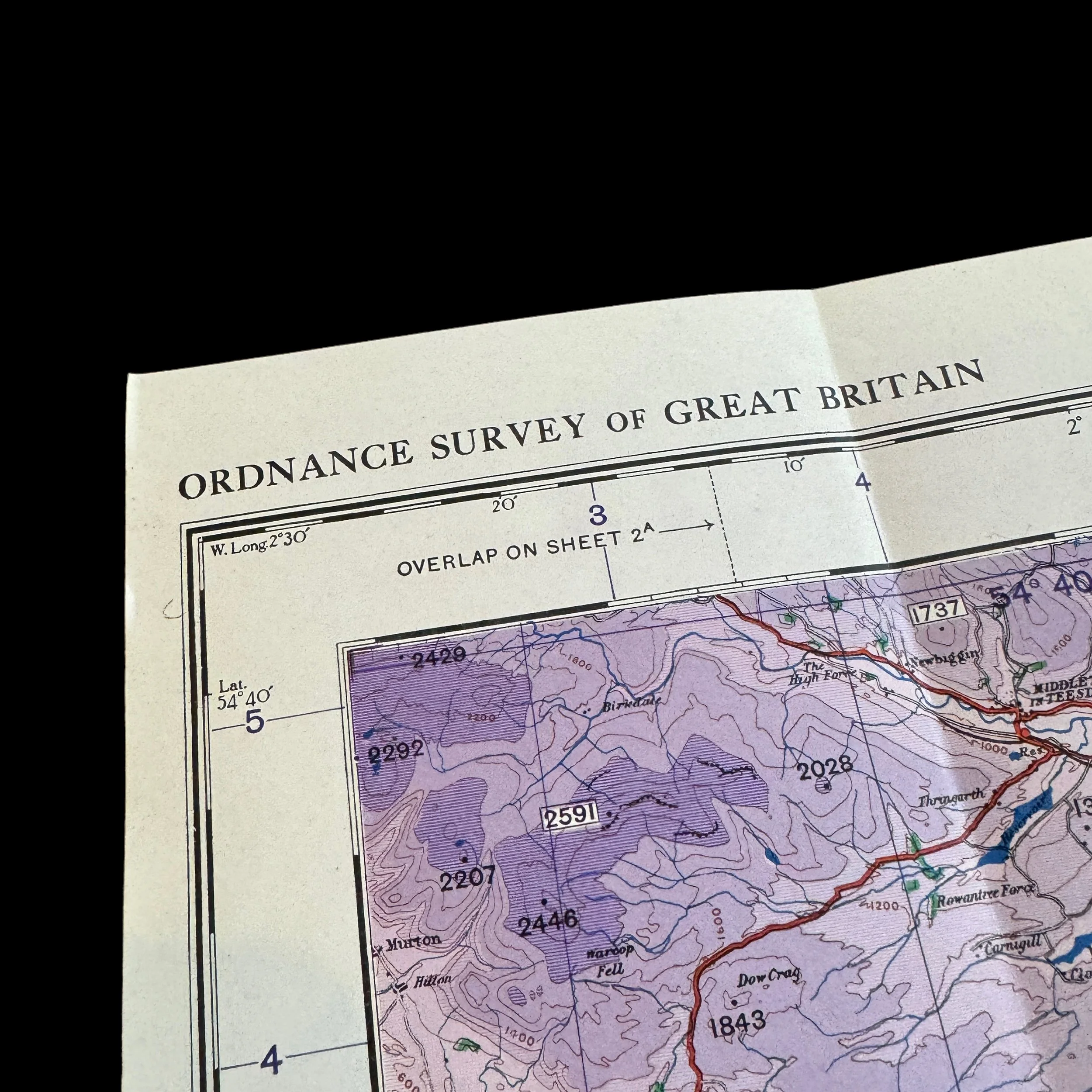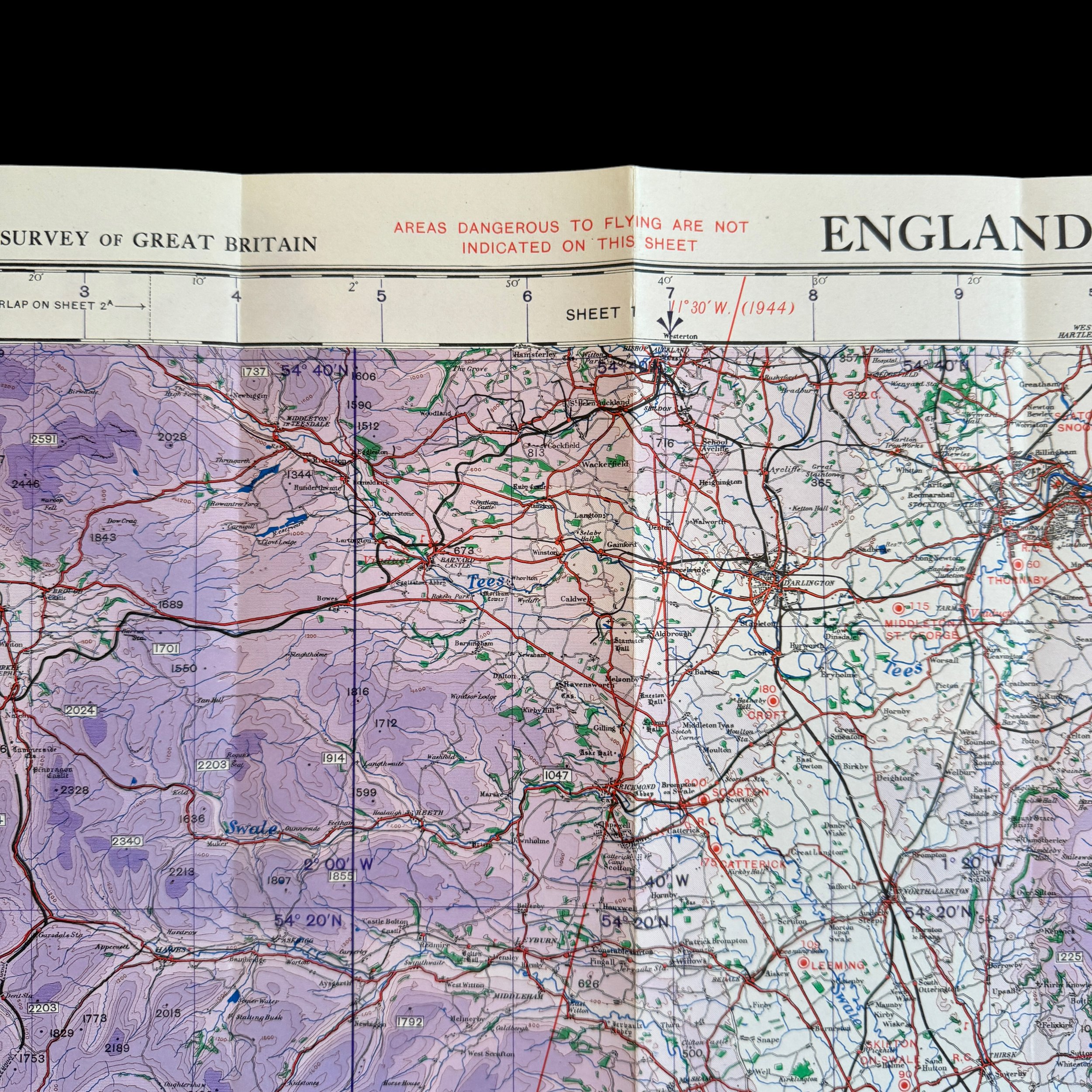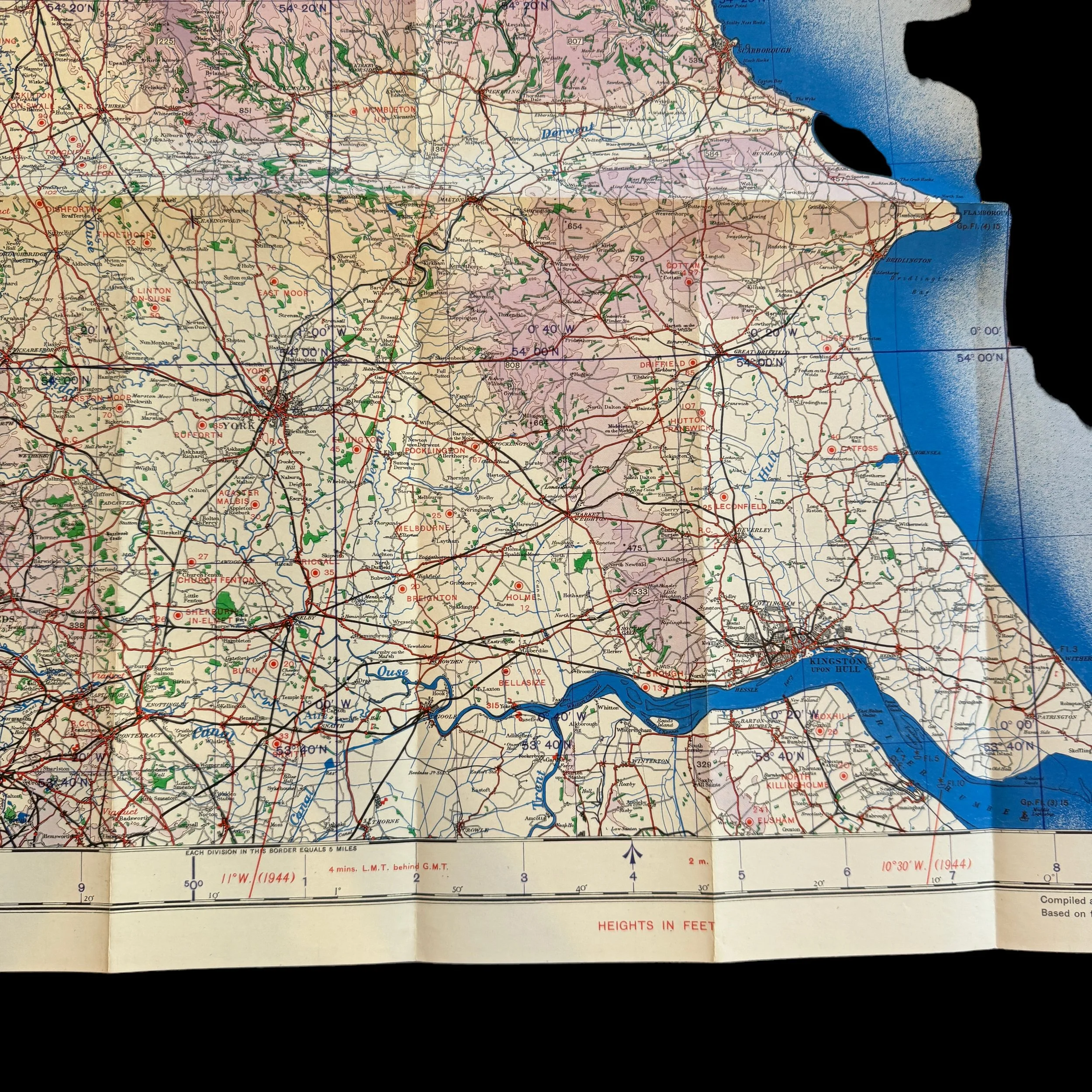RARE! WWII 1943 (2nd War Edition) R.A.F. Fighter Command British Pilot Annotated Navigational Map of ENGLAND NORTH EAST































RARE! WWII 1943 (2nd War Edition) R.A.F. Fighter Command British Pilot Annotated Navigational Map of ENGLAND NORTH EAST
Comes with hand-signed C.O.A.
This rare and museum-grade WWII “GRATICULE EDITION” Allied combat map was used following England’s defence of the German Luftwaffe during the infamous Battle of Britain by a Royal Air Force pilot of the RAF Fighter Command. Dated with updated information as of 1943 this heavily annotated RAF map is also labelled “R.A.F. 2nd WAR EDITION” and “AREAS DANGEROUS TO FLYING ARE NOT INDICATED ON THIS SHEET”. This heavily used map from WWII is an incredible piece of aviation and WWII history.
RAF Bomber Command, along with the United States Army Air Forces, played the central role in the strategic bombing of Germany in World War II. From 1942 onward, the British bombing campaign against Germany became less restrictive and increasingly targeted industrial sites and the civilian manpower base essential for German war production. In total 364,514 operational sorties were flown, 1,030,500 tons of bombs were dropped and 8,325 aircraft lost in action. Bomber Command crews also suffered a high casualty rate: 55,573 were killed out of a total of 125,000 aircrew, a 44.4% death rate. A further 8,403 men were wounded in action, and 9,838 became prisoners of war.
In 1941, the Butt Report revealed the extent of bombing inaccuracy: Churchill noted that "this is a very serious paper and seems to require urgent attention". The Area Bombing Directive of 14 February 1942 ordered Bomber Command to target German industrial areas and the "morale of...the industrial workers". The directive also reversed the order of the previous year instructing Bomber Command to conserve its forces; this resulted in a large campaign of area bombardment against the Ruhr area. Professor Frederick Lindemann's "de-housing" paper of March identified the expected effectiveness of attacks on residential and general industrial areas of cities. The aerial bombing of cities such as the Operation Millennium raid on Cologne continued throughout the rest of the war, culminating in the controversial bombing of Dresden in 1945.
In 1942, the main workhorse-aircraft of the later part of the war came into service: the four-engined heavies. The Halifax and Lancaster made up the backbone of the Command; they had a longer range, higher speed and much greater bomb load than earlier aircraft. The older four-engined Short Stirling and twin-engined Vickers Wellington bombers were not taken out of service, but moved to less demanding tasks such as mine-laying. The classic aircraft of the Pathfinders, the de Havilland Mosquito, also made its appearance. By 25 July 1943, the Bomber Command headquarters had come to occupy "a substantial set of red brick buildings, hidden in the middle of a forest on top of a hill in the English county of Buckinghamshire".
An offensive against the Rhine-Ruhr area ("Happy Valley" to aircrew) began on the night of 5/6 March 1943, with the first raid of the Battle of the Ruhr on Essen. The bombers destroyed 160 acres (0.65 km2) of the city and hit 53 Krupps buildings. The Battle of Hamburg in mid-1943 was one of the most successful Bomber Command operations, although Harris' extension of the offensive into the Battle of Berlin failed to destroy the capital and cost his force more than 1,000 crews in the winter of 1943–44. In August 1943, Operation Hydra, the bombing of the Peenemünde V-2 rocket facility opened the secondary Operation Crossbow campaign against long-range weapons.
By April 1944, Harris was forced to reduce his strategic offensive as the bomber force was directed (much to his annoyance) to tactical and transport targets in France in support of the invasion of Normandy. The transport offensive proved highly effective. By late 1944, bombing such as Operation Hurricane (to demonstrate the capabilities of the combined British and US bomber forces), competed against the German defences. Bomber Command was now capable of putting 1,000 aircraft over a target without extraordinary efforts. Within 24 hours of Operation Hurricane, the RAF dropped about 10,000 tonnes of bombs on Duisburg and Brunswick, the greatest bomb load dropped in a day during the Second World War.
The peak of Bomber Command operations occurred in the raids of March 1945, when its squadrons dropped the greatest weight of bombs for any month in the war. Wesel in the Rhineland, bombed on 16, 17, 18 and 19 February, was bombed again on 23 March, leaving the city "97 percent destroyed". The last raid on Berlin took place on the night of 21/22 April, when 76 Mosquitos made six attacks just before Soviet forces entered the city centre. By this point, most RAF bombing operations were for the purpose of providing tactical support. The last major strategic raid was the destruction of the oil refinery at Vallø (Tønsberg) in southern Norway by 107 Lancasters, on the night of 25/26 April.
Once the surrender of Germany had occurred, plans were made to send a "Very Long Range Bomber Force" known as Tiger Force to participate in the Pacific war against Japan. Made up of about 30 British Commonwealth heavy bomber squadrons, a reduction of the original plan of about 1,000 aircraft, the British bombing component was intended to be based on Okinawa. Bomber Command groups were re-organised for Operation Downfall but the Soviet invasion of Manchuria and the Bombing of Hiroshima and Nagasaki occurred before the force had been transferred to the Pacific.
In Europe Bomber Command's final operation was to fly released Allied prisoners of war home to Britain in Operation Exodus.